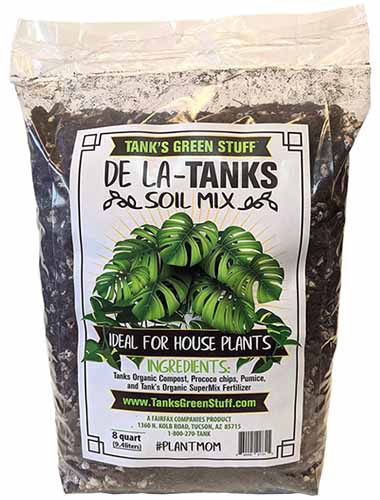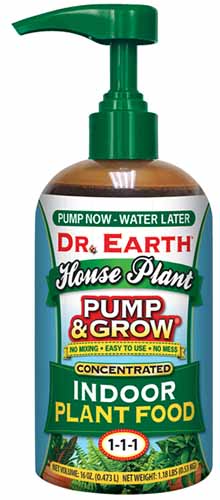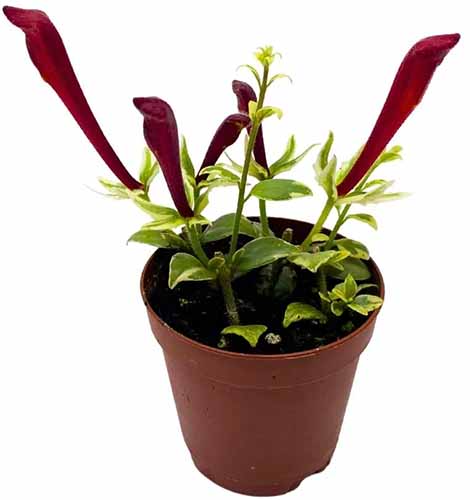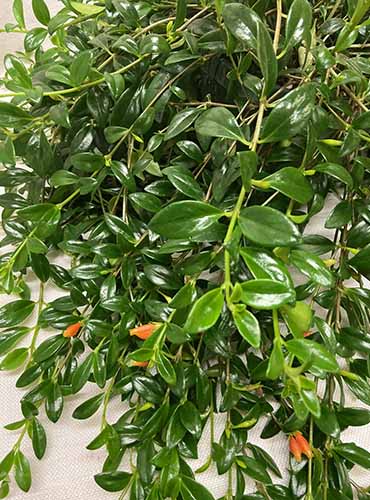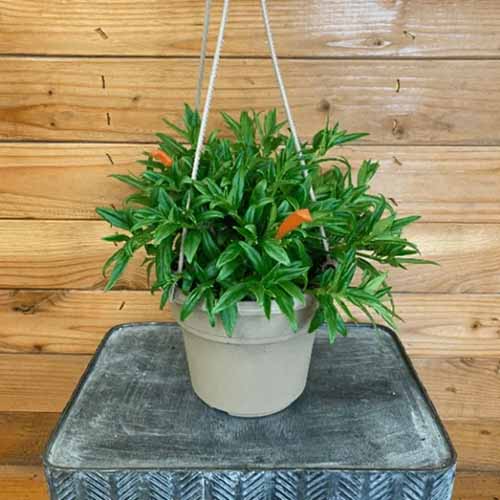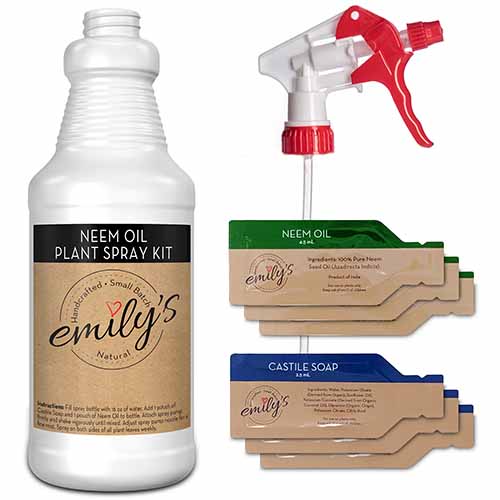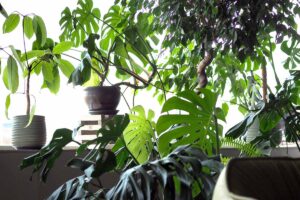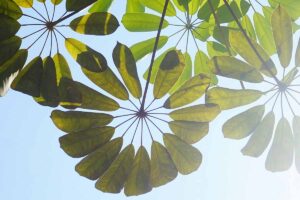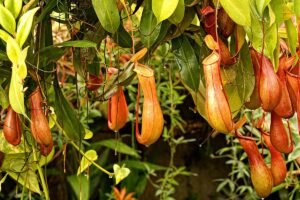Columnea spp., Nematanthus spp.
If you love cultivating houseplants that are happy to flower indoors, be sure to put goldfish plant on your wishlist.
With eye-catching foliage, these epiphytic plants bear goldfish-shaped flowers and some of them bloom throughout the year. Even better, these houseplants love living life elevated and are perfectly suited for hanging baskets.
You may have tried growing goldfish plant before – and failed – and want to learn what may have gone wrong so you can try it again.
Or perhaps you’re new to this houseplant and are contemplating adding it to your own personal indoor jungle.
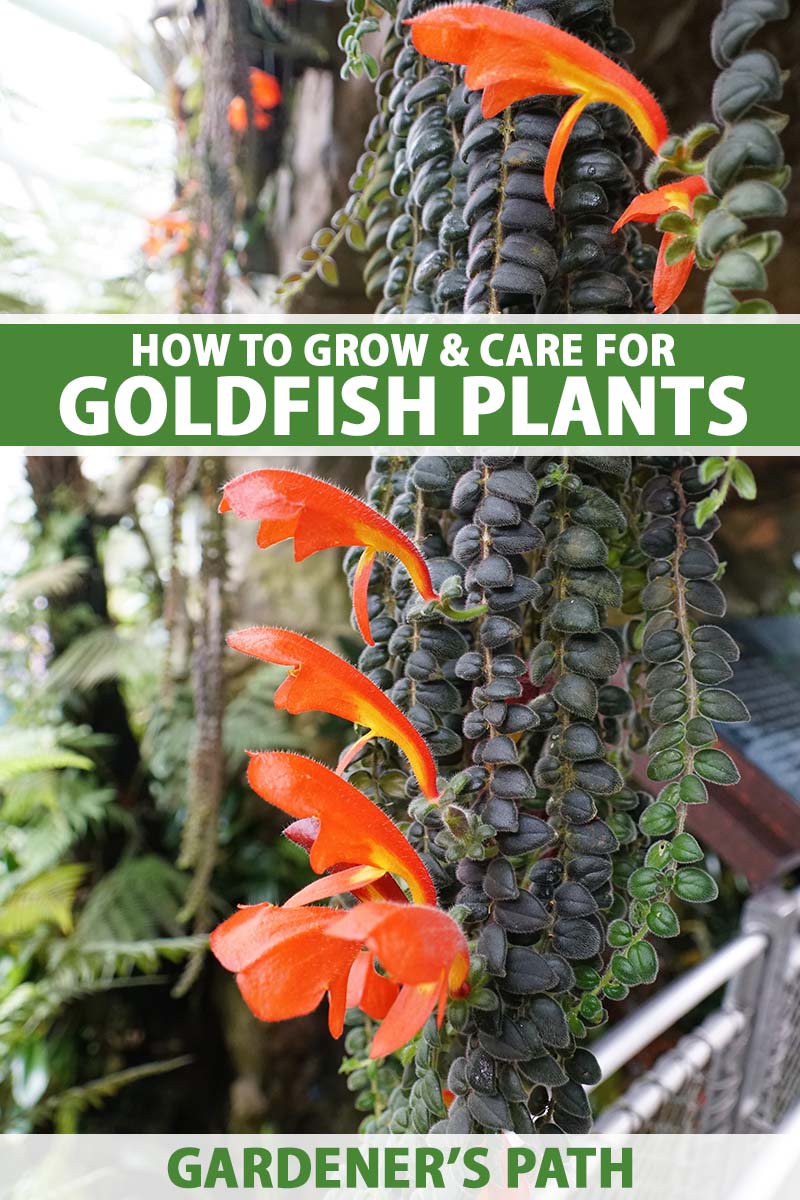
We link to vendors to help you find relevant products. If you buy from one of our links, we may earn a commission.
As for me, when snowy winter weather has me stuck indoors, the bright green foliage of my goldfish plant (Nematanthus gregarius) is a welcome sight – it makes me feel like a beautiful green shrub has sprouted in my kitchen!
Without even a thought to the eye-catching blooms, I love seeing the way its foliage catches the sunlight and admiring the gorgeous shine on those waxy leaves.
If this description of my own houseplant’s foliage sounds unfamiliar to you, rest assured, there are actually many different types of goldfish plants, and while their foliage and blooms vary somewhat from species to species, luckily their care requirements are similar.
Although these houseplants have a reputation as being somewhat fussy, once you understand their needs, you’ll be able to keep them happy.
In this article you’ll learn about growing requirements such as light and water needs, what types of pests to look out for, the different species and cultivars to choose from, and even how to propagate them.
Here’s a sneak peek at what I’ll cover:
What You’ll Learn
What Are Goldfish Plants?
Goldfish plants are flowering houseplants named for their goldfish-shaped blooms.
These epiphytic plants have creeping or climbing growth habits, with some being more vining, and others more bushy.
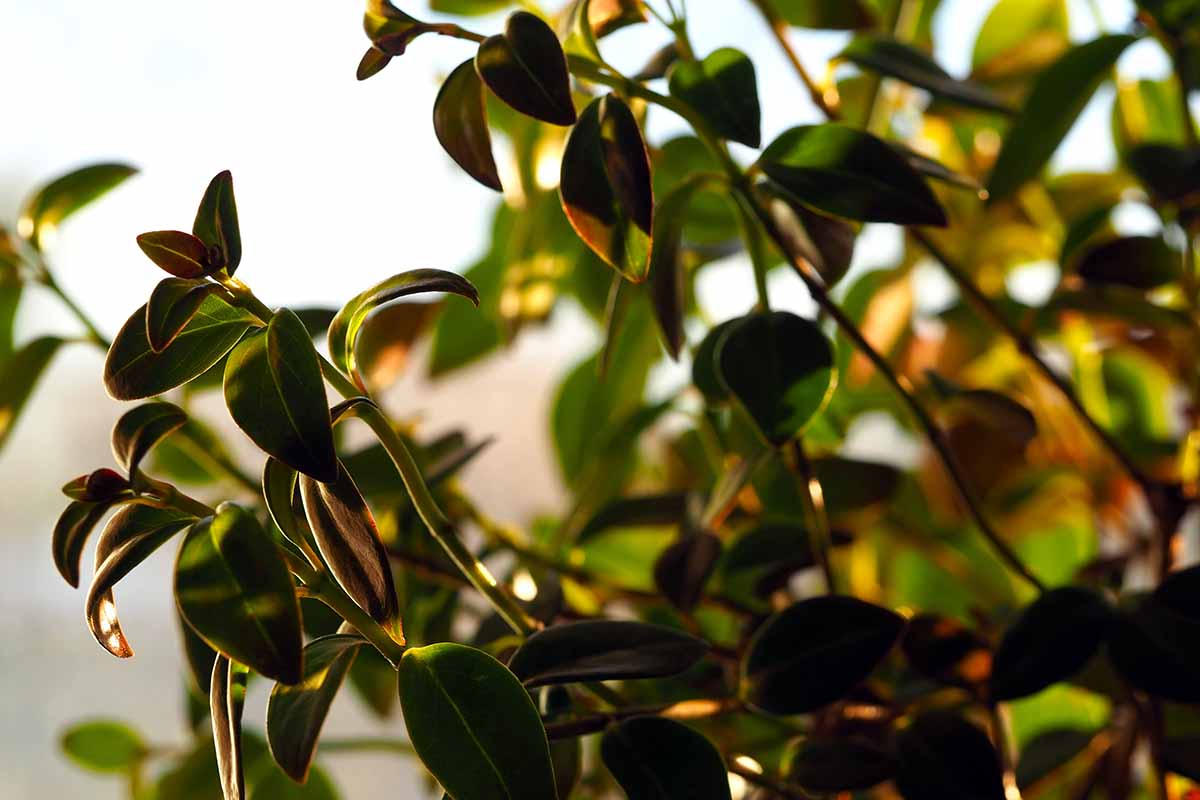
They have oval-shaped leaves that are hairy, smooth, or glossy depending on the species.
Most have medium green leaves, though some sport a darker tint, and there are also cultivars with green and white or green and yellow variegated foliage.
As for their renowned blooms, these are red, orange, yellow, or pink, and look like small fish swimming among the green foliage.
Flowers grow along the leaf axils of the stems and mature specimens can be covered with dozens of blooms at once.
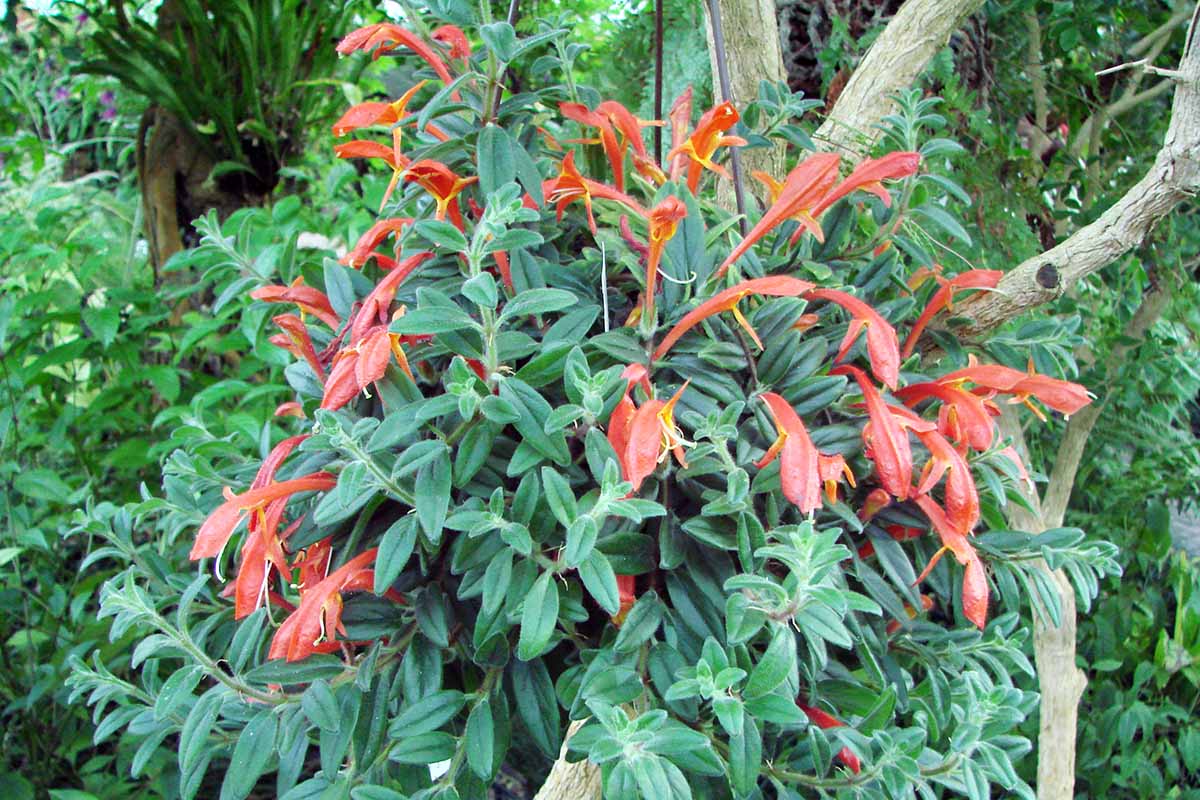
It’s easy to confuse these houseplants with their close relative, the lipstick plant.
But you can differentiate these two by their flowers – the blooms on lipstick plants are held at the end of their stems – on goldfish plants, they are produced along the stems, at leaf axils.
As houseplants, blooming is primarily in spring and summer, but flowers can appear throughout the year on some species.
If flowers are pollinated, they will produce round (or roundish) white, pink, or red berries.
Cultivation and History
Goldfish plant is a common name given to certain species in the Nematanthus and Columnea genera.
Native to Central and South America, these species are members of the Gesneriaceae or gesneriad family, and are related to such houseplants as African violet, Cape primrose, and gloxinia.
These species originate in humid tropical or subtropical forests, and some of them come from high elevation cloud forests.
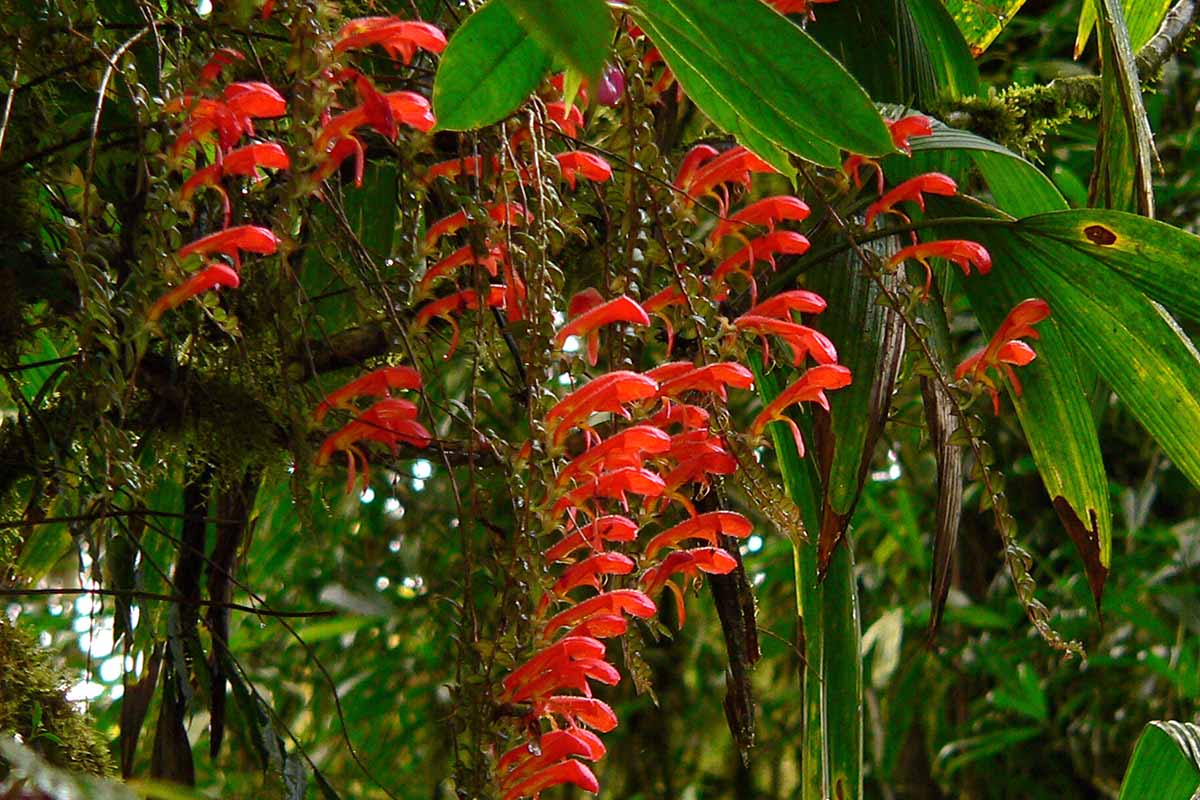
The Nematanthus genus was originally described in 1821 by German botanist Heinrich Schrader. The genus name means “thread flower” in reference to the appearance of the long flower stems on the species N. corticola.
As for Columnea, it was classified in 1753 by the father of taxonomy himself, Carl Linneaus, and named in honor of Italian botanist Fabio Colonna.
Also known as “flying goldfish plants” or “dancing dolphins,” these epiphytes can be grown as houseplants – but some of them are easier to care for than others.
For the more finicky types, gardeners may have better luck cultivating them in greenhouse conditions.
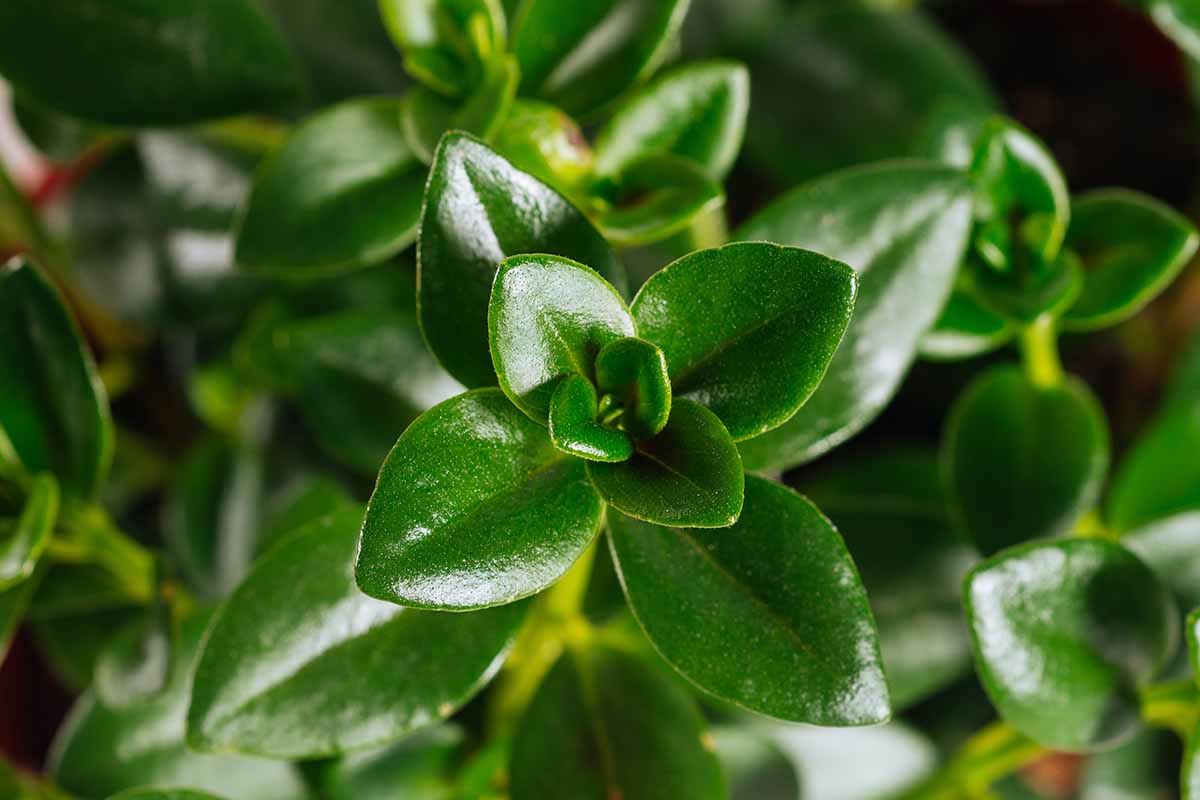
Goldfish plants require a mild climate – most of them are not well-suited for growing outdoors year round except in mild tropical or subtropical climates such as those found in Hawaii.
You’ll learn more about individual USDA Hardiness Zones of different species later in the article, so keep reading!
Goldfish Plant Propagation
The easiest way to propagate these houseplants is by taking stem cuttings.
While you can root cuttings in either water or soil, water rooting tends to be faster and more reliable so that is the method I’ll describe here.
I’ll also guide you in transplanting goldfish plants grown from cuttings as well as nursery-purchased specimens which have outgrown their pots.
From Stem Cuttings
To propagate a new specimen from stem cuttings, first gather your supplies. You’ll need three-inch pots, growing medium, a jar, water, and sterilized scissors or garden pruners.
Before taking your cuttings, first sterilize the scissors or snips by wiping the blades down with hydrogen peroxide or rubbing alcohol.
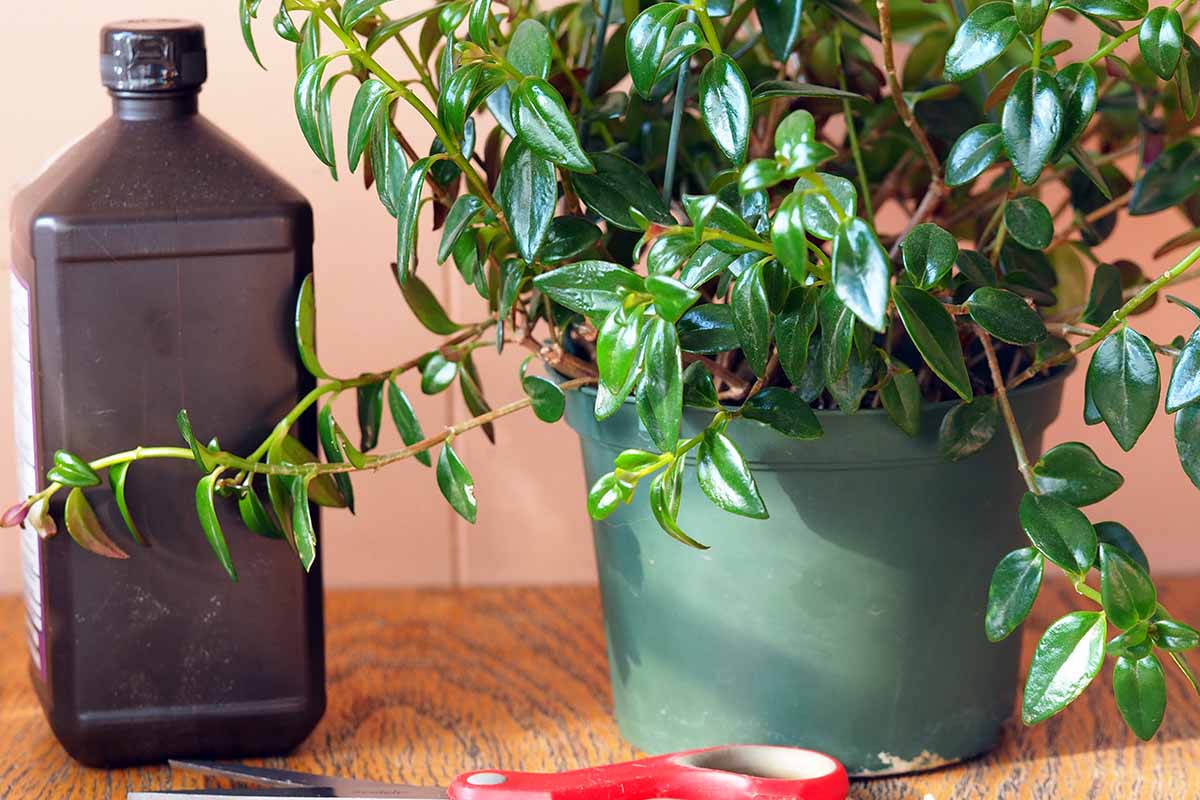
Take cuttings that are three to five inches long from healthy stems. You can root just one cutting per three-inch pot, or for a fuller specimen, up to three or four cuttings per three-inch pot.
Remove the bottom set or two of leaves from each cutting, then stick the cuttings in a jar filled with water, making sure that the remaining leaves are not under water.

Place the jar in a location that stays between 65 to 70°F and has bright, indirect light. Change the water out every few days to keep it fresh.
The cuttings should grow roots within three weeks. Once they have roots that are an inch or so long, you can pot them up.
When you’re ready to plant the rooted cuttings, prepare your pots with growing medium, filling the pots so there’s about an inch of space at the top.
Need a growing medium?
Whatever houseplant growing medium you choose, make sure it is well-draining, but also good at holding moisture, and make sure its pH is in a range of 6.1 to 7.3.
While some indoor gardeners have satisfactory results using an all-purpose houseplant growing medium for Nematanthus and Columnea species, I prefer one that is more fitting for epiphytes, such as De La Tank’s House Plant Mix.
This mix is chunky, providing plenty of aeration, but is also moisture retentive.
De La Tank’s House Plant Mix is available in one-, eight-, or 16-quart bags from Tank’s Green Stuff via Arbico Organics.
Wet the growing medium, then poke holes with your finger, spacing the cuttings one to two inches apart or more, depending on how full you’d like your specimen to be.
Insert the cuttings into the holes, one to two inches deep, then pinch the growing medium closed around the stems. Gently level and pat down the growing medium to ensure good contact.
Place the rooted cuttings in indirect bright light, avoiding direct sun for the next week or so.
It will take goldfish plants grown from cuttings approximately one year to bloom.
Find more guidance about propagating houseplants from stem and leaf cuttings in our guide!
Transplanting
Whether grown from cuttings or purchased via nursery, Nematanthus and Columnea species will need to be potted up to larger containers when their roots get too cramped in their current pots.
You can always pull your specimen out of its container to check its roots, but there are signs to look for without unpotting your houseplant:
Are you noticing roots emerging from the pot’s drainage holes? Or are there roots circling around on the surface of the growing medium? Are you required to water your goldfish plant twice a week or more to keep it from drying out?
All of these are signs that a specimen needs to be transplanted to a larger pot. On the other hand, don’t repot more often than you need to – slightly potbound specimens are more likely to bloom.
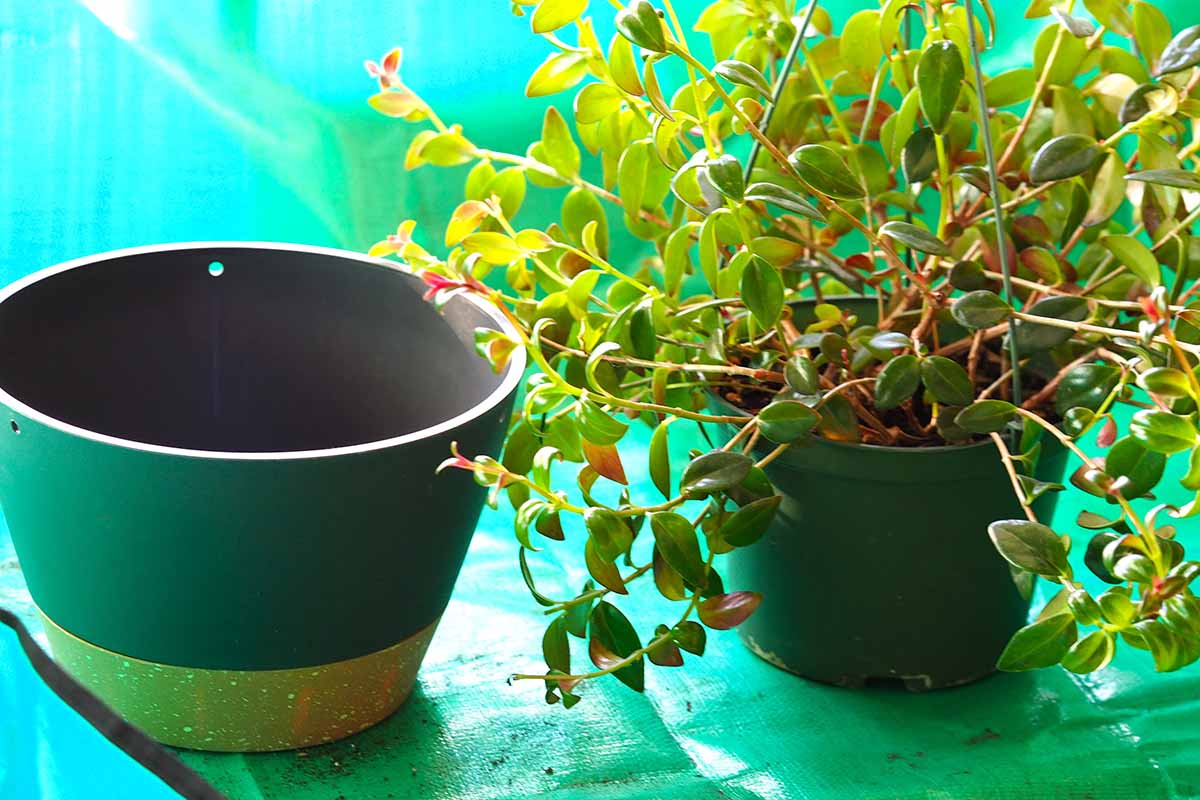
To transplant your goldfish plant you’ll need growing medium and a pot that is just one size larger than the houseplant’s current container, one that is equipped with drainage holes.
Remove the goldfish plant from its current container. If it’s in a hanging basket, remove the hanger first.
If the houseplant is potbound, gently loosen the outer portion of the root ball by rubbing it with your fingers or the palm of your hand.
Place a layer of growing medium in the bottom of the new container, then situate the root ball on top of this, centered in the pot.
The top of the root ball should be about an inch below the rim of the new container. If it’s too high or too low, adjust the amount of growing medium below the root ball.
When the specimen is at the right level back fill with growing medium, then water in the houseplant.
How to Grow Goldfish Plant
To keep your Columnea or Nematanthus species happy, you’ll want to offer it the best possible combination of light, water, temperature, and humidity.
Light
Let’s start by looking into lighting requirements.
These species are epiphytes that grow in part shade in their natural habitat, so they can handle some direct sun, but shouldn’t be allowed to bake under the sun’s rays for long periods of time.
The best case scenario would be to offer the specimen some direct sunlight in the morning, with bright indirect light the rest of the day.
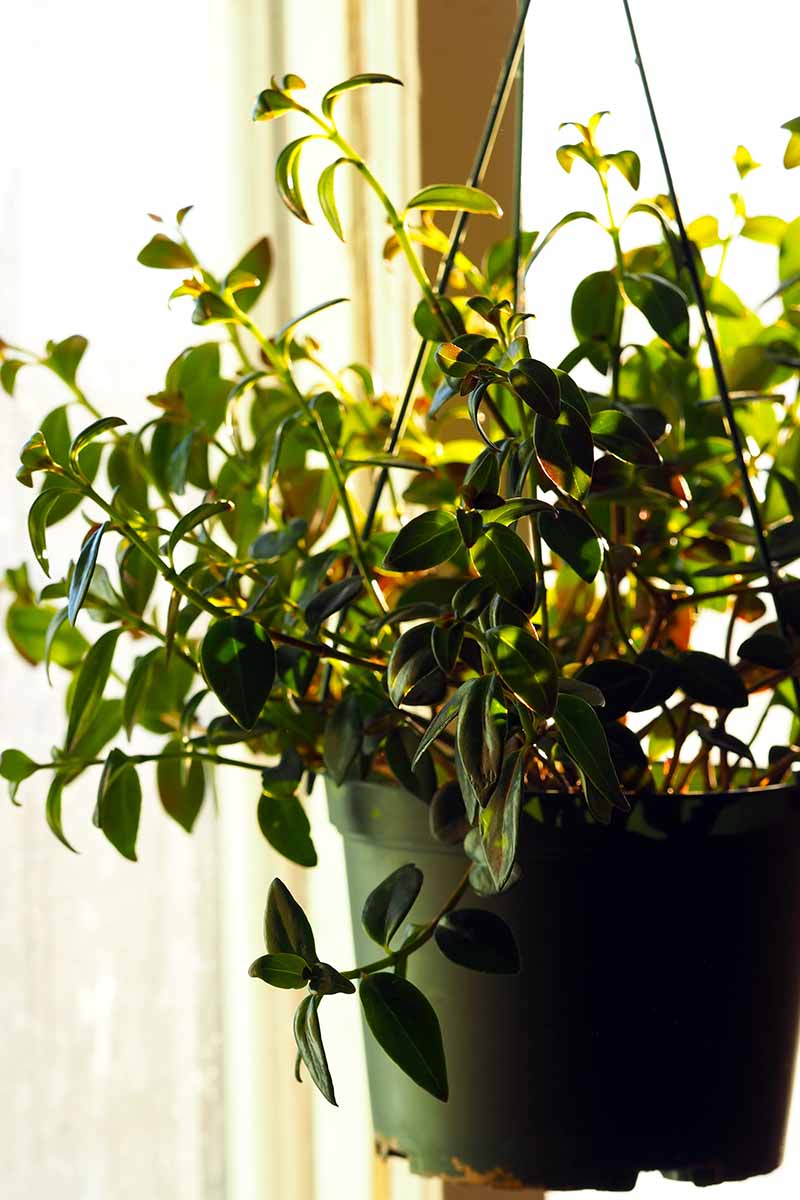
These houseplants are ideal candidates for growing next to east-facing windows.
Some indoor gardeners grow them next to west-facing windows – but if you choose this type of location for your specimen, make sure the window isn’t too hot during summer.
If you live in a northerly latitude like me, an east-facing window may not provide enough sun during the winter months.
In this case, locating the plant a few feet from a south-facing window may work well for you during winter, when the sun is less intense.
For indoor gardeners using light meters, the ideal range for these houseplants is 1000 to 2500 foot candles – but make sure that the light is diffused.
You may be able to achieve that light exposure by placing the houseplant close to a south-facing window that has a sheer white curtain on it. But all homes are different, so the best way to know for sure is to check with a light meter.
Read our guide to using and choosing a light meter to learn more.
Water
As epiphytes, Nematanthus and Columnea prefer a well-draining growing medium that remains fairly moist, but not soggy.
They also benefit from receiving water a little less frequently in winter than during the growing season, since days are shorter and the sun is less intense.
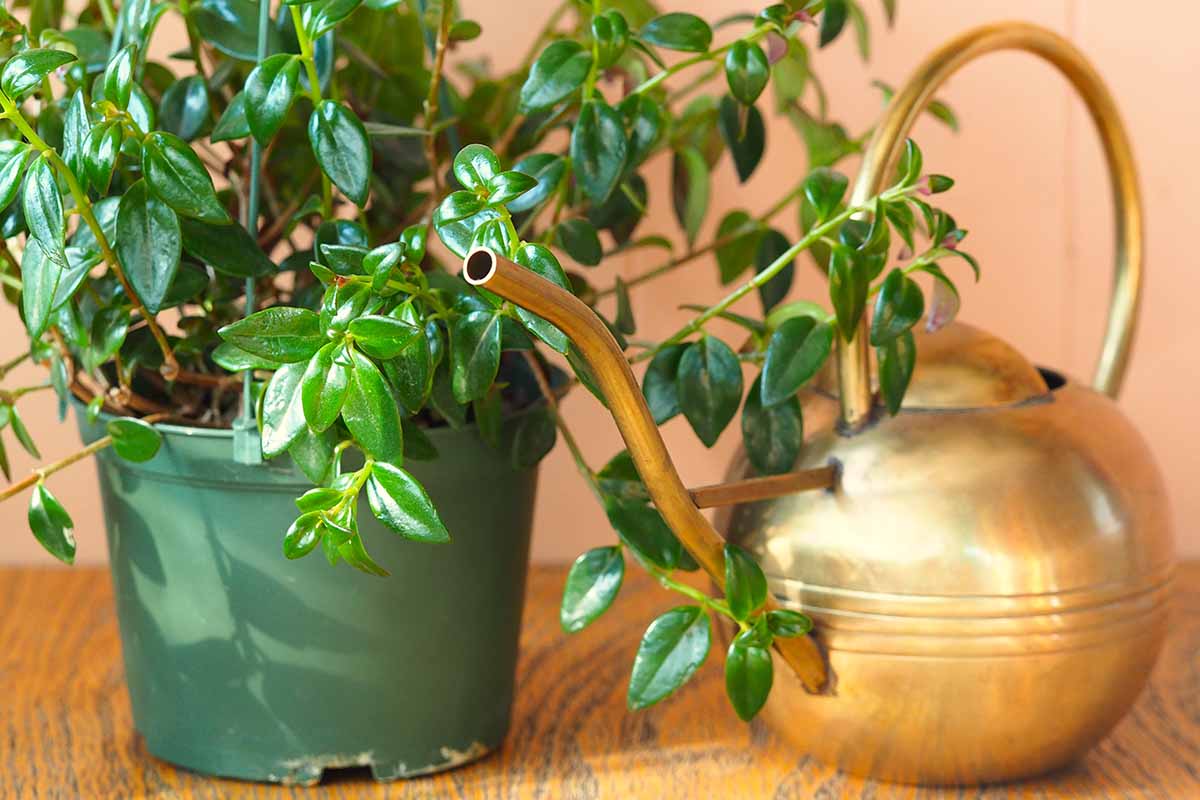
So from spring through autumn, water when the top half inch of the growing medium is dry.
But during winter, allow the top two to three inches of the growing medium to dry between waterings.
Be sure to water evenly or leaves can drop – a houseplant watering can with a narrow spout can help with this.
Humidity
Goldfish plants hail from moist forests, so they don’t mind high humidity.
However, they adapt fairly well to the humidity levels found in most homes. An indoor air moisture level of 40 percent is acceptable for these plants, but higher humidity will improve the growth habit of the Nematanthus or Columnea.
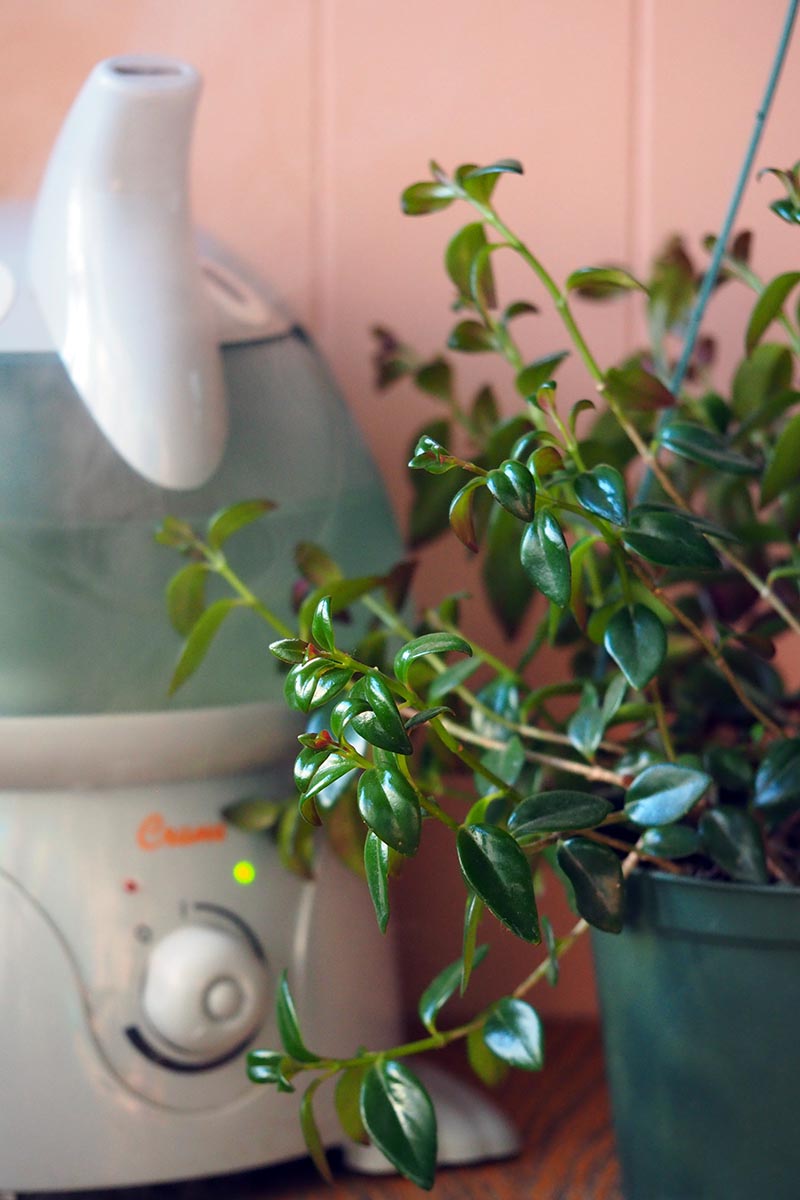
When growing a more finicky species such as C. microcalyx, you will need a humidity level of 50 to 85 percent.
Check your humidity levels first, and if you find your indoor air moisture levels lacking, use a humidifier – especially during winter, when air tends to be dry from heating.
Temperature
Goldfish plants do best in daytime temperatures between 70 and 80°F, and nighttime temperatures between 60 and 70°F.
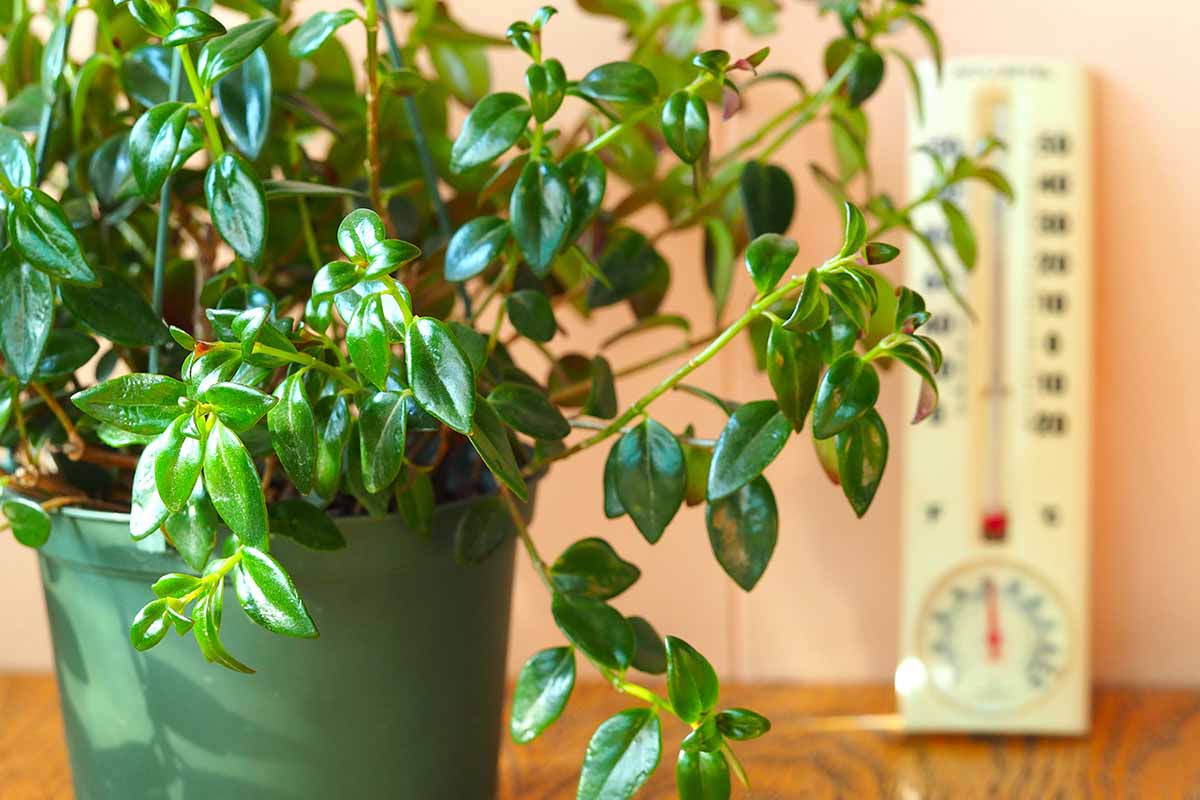
Be sure to keep them at temperatures above 55°F, or they can sustain cold damage.
Also, avoid exposure to temperatures above 80°F, which can cause leaf drop. This means that those of us in locations with very hot summers should avoid summering these houseplants out of doors.
Growing Tips
- Grow in bright, indirect light with some direct morning sun.
- Water when the top half inch of soil is dry, or when the top two to three inches are dry during winter.
- Provide extra humidity if indoor levels are below 40 percent.
Pruning and Maintenance
Although goldfish plants are certainly not the most high-maintenance houseplants you’ll find, they do need a bit more attention than pothos or hoyas, for example.
Here’s what you’ll want to know about:
Encouraging Flowering
The main attraction of goldfish plants are their “schools” of colorful goldfish-shaped blooms – and you’ll want to know how to encourage them to make an appearance.
Reduce watering in winter to encourage spring blooms, as noted above in the watering section.
Also, be sure to keep these houseplants in snug pots – and don’t repot too often.
Repotting
As noted previously, keeping goldfish plants in somewhat snug pots will encourage flowering, so don’t be overeager to repot your houseplant.
Pot up approximately every two to three years, preferably in late spring during a period of active growth, and follow the instructions indicated in the transplanting section above.

When repotting be sure to upgrade to a container with drainage holes that is only one size larger than the current pot.
That means there should only be about an inch of room between the edge of the old pot and the new one – you can place the potted specimen into the new pot to check for this.
Not sure if your specimen needs repotting?
As previously noted, it may be time to repot a specimen if it is drying out too quickly, or if roots are emerging from either the drainage holes or the surface of the growing medium.
Pruning
There are a few different reasons you may wish to prune your goldfish plant: to deadhead spent blooms, to create a bushier specimen, or to keep the stems at a desired length.
When pruning to reshape your Nematanthus or Columnea, wait until the plant has done flowering in spring or summer.
Whatever your purpose for pruning – when you pull out those scissors or snips, make sure to wipe down the blades with hydrogen peroxide first to sterilize them, and clip stems right above a pair of leaves to keep the specimen looking its best.
Fertilizing
Fertilize every 15 days from spring through autumn, while the plant is actively growing.
Use a gentle, balanced fertilizer, such as Dr. Earth’s Pump and Grow Indoor House Plant Food.
Dr. Earth’s Pump and Grow Indoor House Plant Food is available in a sixteen ounce pump bottle from Arbico Organics.
This fertilizer can be added to your watering can when watering the goldfish plant but be sure to use plain water at least once a month to flush any fertilizer salt buildup from the growing medium.
Goldfish Plant Species and Cultivars to Select
When looking for a goldfish plant to purchase, you will find a selection of options.
Often identified simply as “goldfish plant,” you may want to keep in mind that oftentimes, the scientific names of these plants are improperly listed.
Here are some of the most widely available species and cultivars, though some are easier to find than others:
Broget Stavanger
‘Broget Stavanger’ is a Columnea cultivar that grows very long vines, up to six feet long, and has beautifully variegated, green and white foliage.
The two-toned leaves of ‘Broget Stavanger’ are small, and flowers are large and red.
You can purchase a ‘Broget Stavanger’ specimen in a two-inch pot from Bubble Blooms via Walmart.
Dibley’s Gold
A cultivar of N. gregarious, ‘Dibley’s Gold’ has gorgeous foliage with inner variegation.
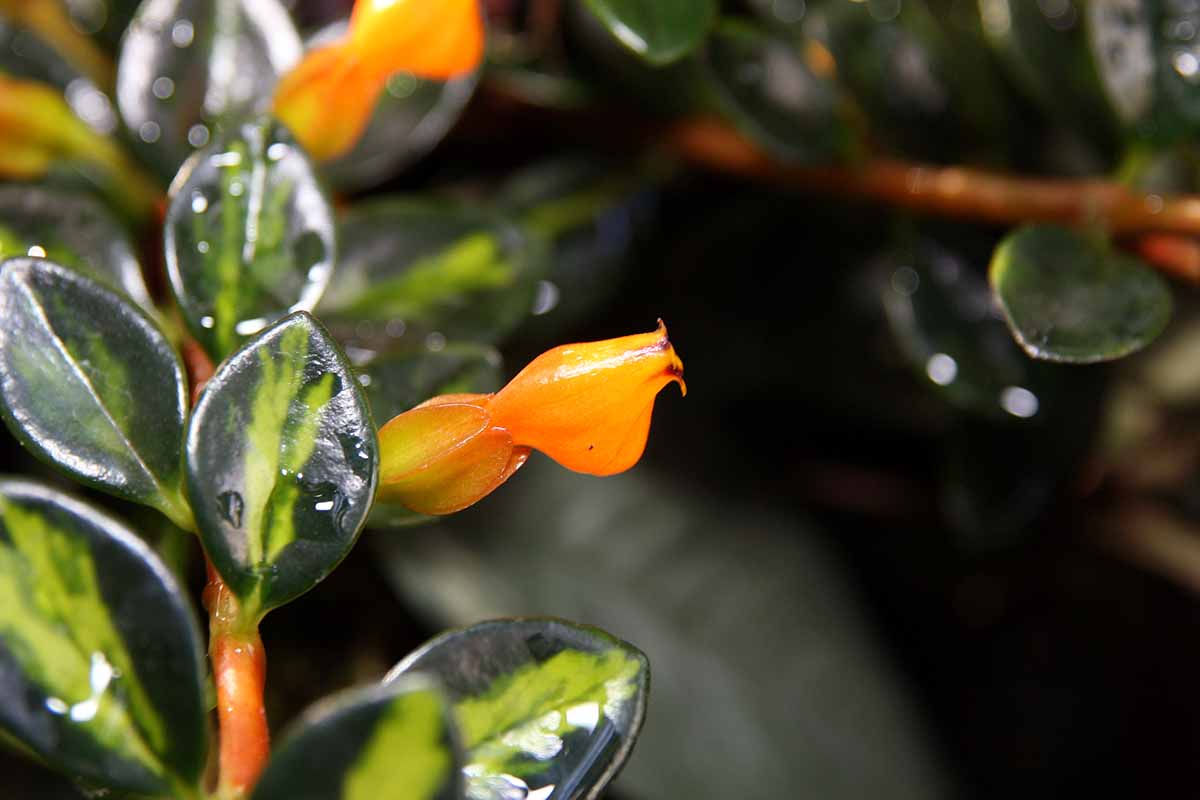
Foliage is dark green with mottled, yellow markings on the centers of leaves, flowers are orange, and vines reach up to three feet long.
Gregarius
Also known as “clog plant” or “guppy plant,” N. gregarious is one of the most commonly cultivated types of goldfish plant.
Guppy plant has medium green foliage that is extremely glossy, small orange flowers, and a bushy growth habit – vines grow upward before trailing down to a length of four feet long.
You can purchase N. gregarius in a six-inch pot from Fisher Nursery via Walmart.
Light Prince
‘Light Prince’ is a cultivar of C. hirta that has fuzzy, variegated green and white leaves, and reddish orange flowers.
This compact cultivar has a spread of just 18 inches.

You can purchase a small ‘Light Prince’ specimen in a two-inch pot from Bubble Blooms via Amazon.
Melissa
‘Melissa’ is a Columnea cultivar that has fuzzy green leaves, and flowers that have a beguiling red and yellow pattern.
You’ll find a C. ‘Melissa’ specimen in a six-inch hanging basket, available for purchase from the Plant Farm via Walmart.
Microcalyx
C. microcalyx has three foot long vines with burgundy colored foliage covered with hairs that give it a soft, velvety texture.
Leaf margins are turned under, and are held on long vines, while tubular, hooded flowers are three inches long and red with yellow throats.
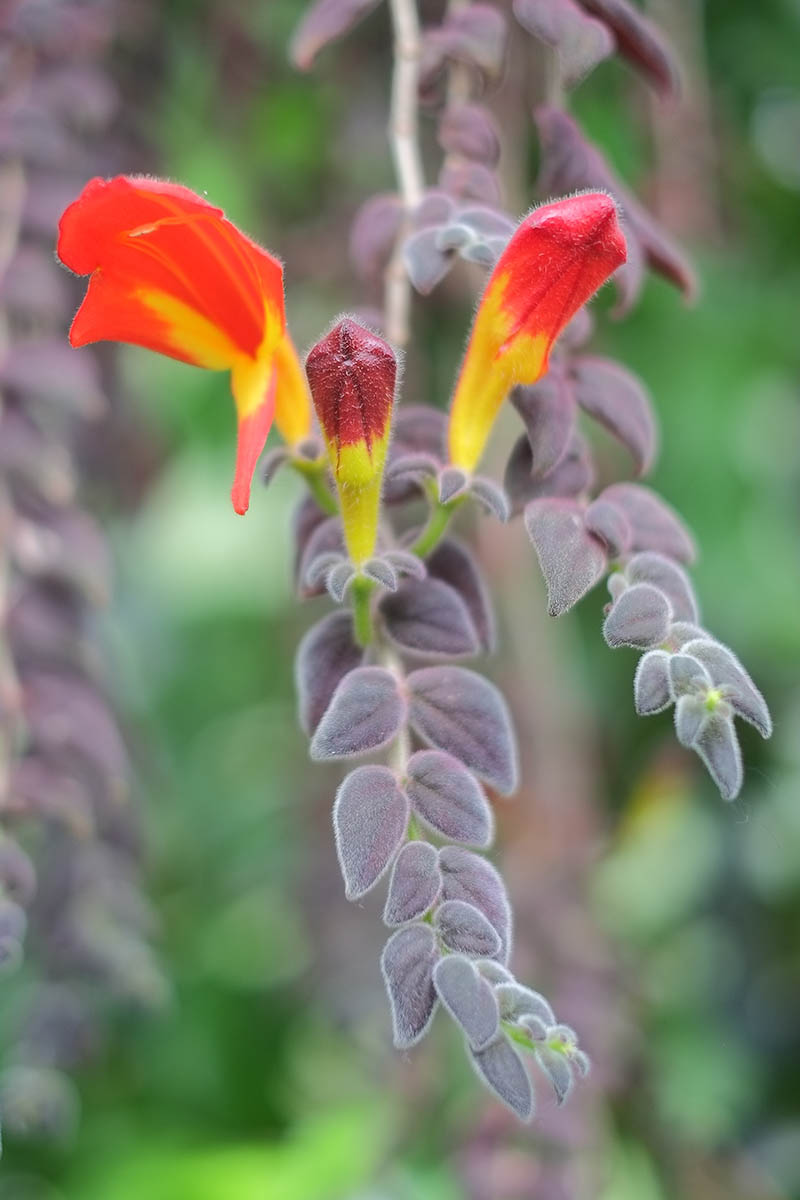
Somewhat temperamental to cultivate, C. microcalyx is not considered beginner-friendly since it needs a combination of high humidity and bright light that can be difficult to achieve indoors.
Of note, some botanists consider C. microcalyx to be the same species as C. gloriosa.
Tropicana
‘Tropicana’ is a Nematanthus hybrid that has dark green leaves with striking, small, yellow and maroon striped blooms. Vines reach 18 inches long or more.

You’ll find ‘Tropicana’ specimens in six-inch pots available for purchase from the Plant Farm via Amazon.
Wettsteinii
An easy to grow species, N. wettsteinii has small green leaves and petite flowers that transition from orange to yellow at the tube opening.

The vines of N. wettsteinii reach 18 inches long.
Managing Pests and Disease
If you’re an experienced houseplant parent you will be familiar with the most common pest and disease problems that indoor gardeners have to deal with.
On the other hand, if cultivating houseplants is a new hobby for you, here’s what to look out for in terms of pests and diseases:
Mealybugs
If you see what looks like fluffy, white debris on the stems of your goldfish plant, you’re likely seeing mealybugs. These sap-sucking pests like to congregate on stems and roots.
My preferred houseplant treatment for mealybugs and other pests is neem oil, which is nontoxic to humans, cats, and dogs.
Emily’s Naturals makes a neem oil kit that includes an empty spray bottle and packets of neem oil concentrate and castile soap.
You just mix the neem oil and soap in the spray bottle with water when you’re ready to use it.
You’ll find this Neem Oil Plant Spray Kit for purchase from Emily’s Naturals via Walmart.
While you should always follow the manufacturer’s directions when applying pesticides, nontoxic or not, there are a few other tips you’ll want to follow when using neem oil on your houseplants.
First, be sure to spray the growing medium and roots, as well as thoroughly drenching the leaves and stems.
After spraying with neem oil, make sure to keep the plant out of direct sun, since sun falling on oil covered leaves can cause them to scorch.
Plan to reapply the product once a week for three to four weeks.
If you’ve struggled with mealybugs before, you might want to tap into even more guidance. Learn more about treating mealybug infestations in our article!
Scale Insects
While mealybugs might be the most easily recognized houseplant pest, scale may be one of the hardest to spot.
That’s because scale insects are well-camouflaged, and will have you wondering, “Is that scale, or is that just a spot?”
Sap suckers like mealybugs, scale insects feast on nutrients from these plants, weakening them, and eventually killing them.
Neem oil can be used to treat scale as well as mealybugs.
Learn more about identifying and controlling scale insects here.
Spider Mites
You may also have to contend with spider mites at some point.
These tiny pests tend to hang out on the undersides of leaves, making them difficult to spot.
The first sign you notice may be a houseplant that looks unwell, with stippled yellow dots on the leaves. As the infestation progresses, you’ll likely see webbing on the foliage.
If you find spider mites – or any other pest – on your goldfish plant, place the houseplant into quarantine to avoid spreading these pests to any of your other houseplants.
Neem oil can be used to treat spider mite infestations as well, so follow the steps outlined above.
You can learn more about dealing with spider mites by reading our article!
Root Rot
As for diseases, your biggest concern will be root rot – luckily, it is also very easy to prevent!
But if your goldfish plant is drooping, has yellowish foliage, and damp soil, root rot is likely already a problem.
Here’s how to prevent this disease: aim for a growing medium that is kept moist but not soggy.
There are many factors which can lead to soggy soil – a pot without drainage holes, letting the pot sit in a saucer full of water, and plants that are potted in oversized containers.
If it’s too late for prevention, I have to warn you that it can be very tough to help a plant recover from root rot – it doesn’t always turn out well.
But if you’d like to try, remove the specimen from its pot, inspect and trim any rotting roots, address the issue causing the soggy soil, and repot if needed into fresh, well-draining growing medium, and an appropriately sized container.
Learn more about root rot and how to deal with it in our guide.
Best Uses for Goldfish Plants
All goldfish plants look right at home in hanging planters, while the cascading foliage of C. ‘Broget Stavanger’ and C. microcalyx looks especially spectacular when elevated and allowed to trail.
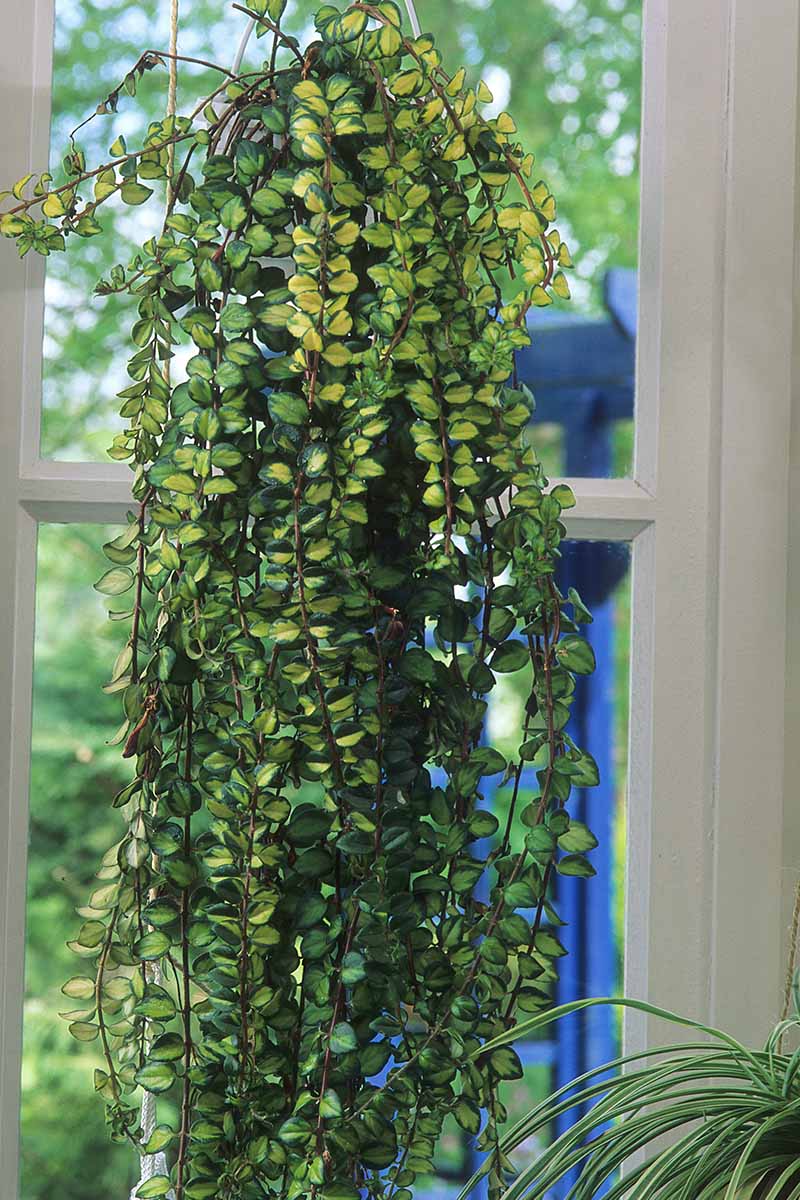
The bushier types like N. gregarius are attractive in hanging baskets as well, but can also grace table tops when pruned to stay compact.
And since goldfish plants are considered to be nontoxic, they are safe for use in households with pets and small children.
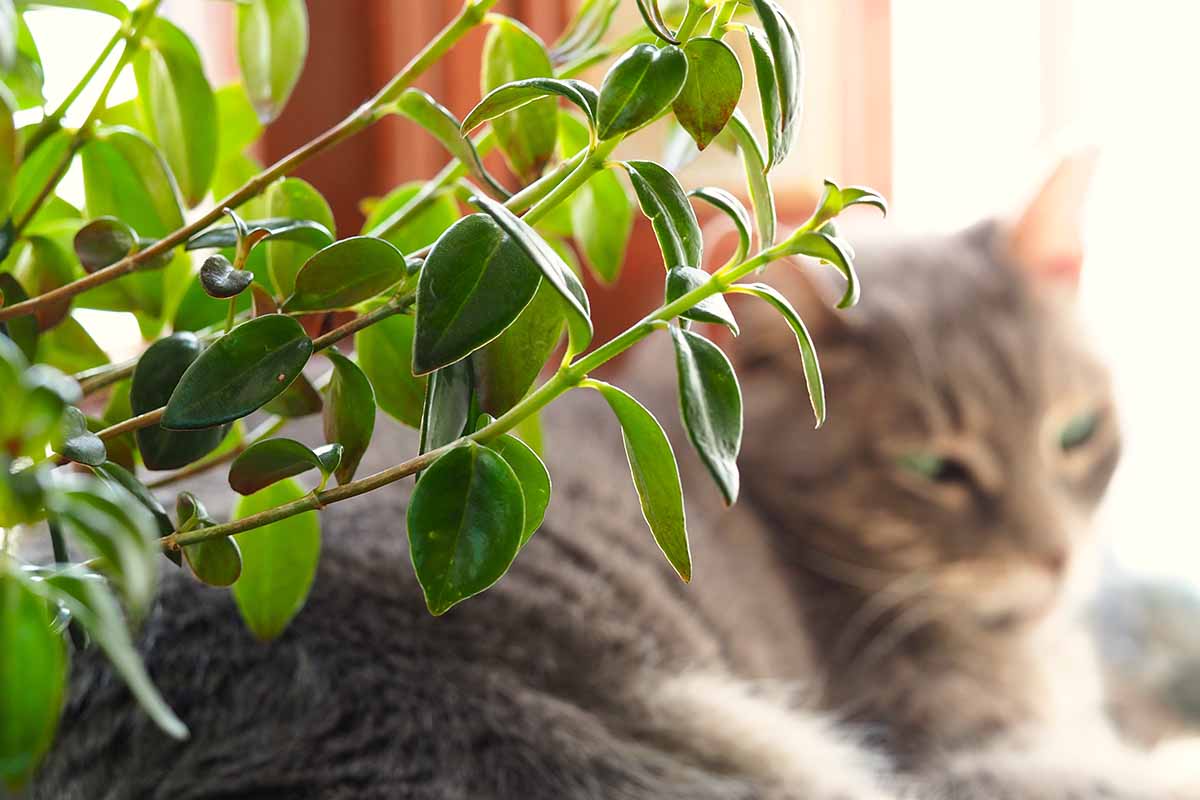
For those in mild climates, Nematanthus and Columnea species can be kept outdoors year round – just be sure to compare your USDA Hardiness Zones to the hardiness of the type you’re growing, since this varies from species to species.
Quick Reference Growing Guide
| Plant Type: | Evergreen epiphyte | Flower/Foliage Color: | Red, pink, orange, yellow/green, variegated, burgundy |
| Native to: | Central America, South America | Maintenance: | Moderate |
| Hardiness (USDA Zone): | 9-12, depending on species | Tolerance: | Humidity |
| Bloom Time/Season: | Spring, summer | Soil Type: | Chunky mix for epiphytes |
| Exposure: | Indirect bright light, with some direct morning sun | Soil pH: | 6.1-7.3 |
| Time to Maturity: | 1 year from cuttings | Soil Drainage: | Well-draining |
| Planting Depth: | 1-2 inch (cuttings), top of root ball (transplants) | Uses: | Hanging baskets, houseplants |
| Height: | 8-12 inches | Order: | Lamiales |
| Spread: | 18-48 inches | Family: | Gesneriaceae |
| Water Needs: | Moderate | Genus: | Columnea, Nematanthus |
| Common Pests and Diseases: | Aphids, mealy bugs, scale, spider mites, thrips; Botrytis bud rot, root rot | Species: | C. hirta, C. microcalyx, N. gregarius, N. wettsteinii |
No Pond Required
Surely, you already love your goldfish plant, and now know how to transform that love into the excellent care this houseplant deserves.
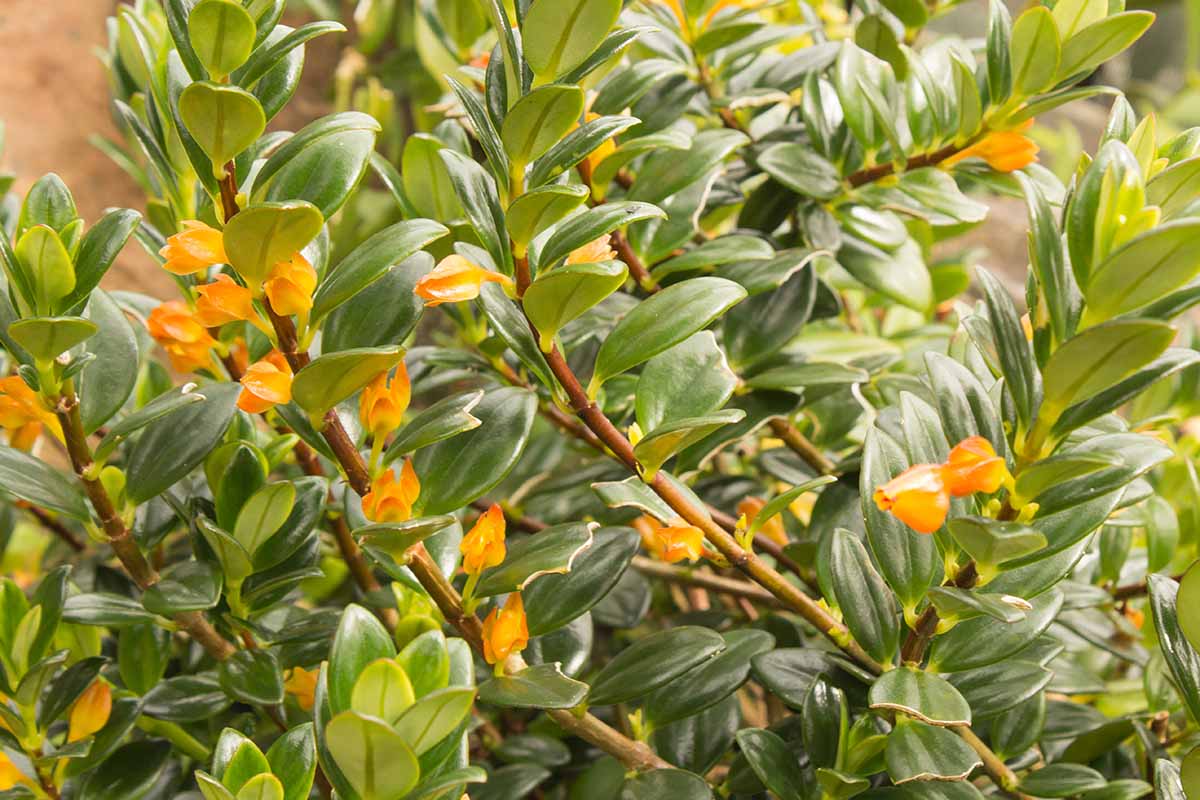
Which type of Nematanthus or Columnea are you growing? Have you tried your hand at propagating some cuttings? Let us know in the comments section below.
And if you need any help troubleshooting a problem, feel free to post your photos and questions there too.
Would you like to keep exploring new and exciting houseplant selections? We have more options for you right here:
